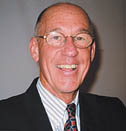
Near the end of January I had the distinct pleasure of visiting two very successful, but very different showrooms. Both companies are plumbing wholesalers - but not in the typical sense. Their showroom business is by far the biggest portion of their sales and profit revenues. Rough plumbing products account for less than 20% of their revenues. Both are family-owned with second and third generation sons running the businesses. The headquarters of both businesses are about 40 miles apart. Both have branch operations - and both know how to make a lot of money!
Each business is located in the heart of one of the most affluent areas in the United States. The saying that "people that have money seem to have it in good times and bad" certainly holds true here. Business is excellent for both businesses.
Therein ends the similarities. From the drive up and walking in the front door, to going through the quote process, writing the order and the total "customer experience," the businesses are very different.
Okay, so why don't I give the names, locations, etc.? Simply because one of the owners respectfully declined to go public! Not because they don't want to share, but because they've been documented in these pages before and they've been inundated with time-consuming calls and visits from curious admirers. So, I'll do my best to document the uniqueness of both without the names and faces.
Actually, both of my visits were prompted by a consulting client who wanted to see a couple of unique showroom operations. By virtue of my job I have the opportunity to visit a lot of showrooms throughout the United States and Canada. I have known the owners of both stores for several years.
Business A
My client and I drove up to the business about 10 in the morning. The building, in the retail district of a small town, is good-looking. There's a parking lot with about 50 spaces and almost all were taken. There were two uniformed men that helped with parking and provided a sense of security. (Although I'm not sure security is an issue in this very affluent community.)Business A was started in 1922 by the current general manager's grandfather. It started as a traditional supply house. Both the manager's mother and aunt (co-owners and in their late 70s) come into work everyday. There's one branch, about 20 miles away. Sales revenues in 2002 were in the mid-50 million range and pay attention to this: gross profit margins on sell are in the mid-40s! Do the simple math on this and see if it doesn't make you wish you were in the showroom business! Sales as a percent of total sales break out as follows: 50% to homeowners, 25% to the plumber and 25% to builders, remodelers and interior designers.
The headquarters showroom is 33,000 sq. ft. and the newly expanding branch store will be 17,000 sq. ft. Company A has a great diversification of products. Remember how I keep preaching "diversification"? Listen to this: They have door and cabinet hardware - a huge display area showing virtually every manufacturer and product made. The space was cramped, but the owner told me these products were being moved into a new 3200-sq.-ft. area that would be more customer friendly.
The next area we walked into was a new 2000-sq.-ft. kitchen display, where we were greeted by a "concierge" (receptionist). There had to be a dozen different vignettes, complete with countertops, appliances, plumbing and lighting. Beautifully done! There are four kitchen sales/designers on staff and they sell the complete project. Company A sold kitchens for years, but got out in the late 1980s. They re-entered the market three years ago.
From kitchens we went into the lighting department, a 16,000-sq.-ft. area with every size, shape, color and finish of chandeliers, floor and table lamps and wall fixtures. There was even a dedicated area for landscape lighting - complete with bushes, shrubs, walkways and simulated walls - a true demonstration area.
Then finally, what we were mainly interested in - the plumbing area. This comprises 10,000 sq. ft. of display space. It is divided over three levels and truly displays a greater variety of product than I've ever seen in one showroom. If it's made, they have it! I don't necessarily agree with this concept, but it sure works for them. They have just gone to their own faucet mounting boxes and boards in a beautifully done medium cherry wood. The only thing on them is the name of their company in black letters. They're very clean and stylish. They use their own product codes to identify product and each product reflects "their price." Not list price, not list less something - but "their" price! I liked it! They show and sell everything that could possibly go into a bathroom: whirlpools, steamers, saunas, towel warmers, tub & shower enclosures, mirrors, cabinets, furniture, stools and a tremendous variety of fixtures and faucets.
The final area is a new venture: tile and stone. They recently bought out a tile and stone business and moved it into their building (another 3,000 sq. ft. area). The ex-owner is the manager of this department and it's a great addition. There's even talk of starting their own slab fabrication business.
So, under one roof they have their own design center: decorative plumbing, door and cabinet hardware, lighting, kitchens, tile and stone. They've created a mini-"big box" - but better run and concentrating on only these areas. Sales break out as follows: plumbing 40%, lighting 30%, door and cabinet hardware 10%, kitchens 10%, tile and stone 10%.
They spend a lot of money advertising and promoting the business - and most of this is to the homeowner, although the interior design trade, builders, remodelers, and plumbers are important too.
My analysis was that the store was a bit too crowded, too cluttered and that they have tried to put 10 pounds of display product in a 5-pound bag! It was hard to move around (so many people and displays so close). I'm not sure it's as "customer friendly" as it might be. Each department has its own salespeople. Their dress was "business professional." There were workstations and pick-up counters in each department. Lighting could have been better. But let me tell you, they have one heck of an operation and one of the most profitable I've ever seen! Congratulations to them on running a successful business!
Business B
Now, let's move on to Business B. This is one of the cleanest, most customer friendly, best-run operations I've ever seen. Remember, this also is a plumbing wholesaler - run by two sons of the founder. Dad started the business in 1960 with a $4000 loan from a friend. Eighty percent of their business is generated by their three showrooms, all within a 30-minute drive of each other. Over 50% is retail, with the balance split between plumbing and building contractors.All three locations are in very affluent, smaller towns. Two stores are showrooms only. One branch has a 6000-sq.-ft. showroom and the other is 7000 sq. ft. The home office store has a plumber self-serve counter area behind a 6000 sq. ft. showroom.
Sales in 2002 were in the mid-40 million range with overall gross margins of over 34%. Showroom margins on sell are in the 42.5% range, while counter sales to the trade average about 29%. Plumbing wholesalers, are you hearing this? Showroom margins of over 40%! I've been preaching it in these pages for years. These two companies confirm that it can be done!
Company B is a Kohler distributor and features its products. They also have a great mix (yes, diversification!) of other decorative plumbing products as well. These are of both domestic and European origin. All three showrooms are the same - same displays (they make their own), same boxes and boards, etc. The space is very open, comfortable and well lit. The product is clearly identified and priced with "their" selling price. Efforts are made to develop a realistic (and profitable) selling price that their salespeople can present with confidence. They often offer customers an itemized listing of the selections. I don't agree with this, but it works for them.
All three locations are in retail shopping areas, which offer great parking and great exposure.
Their stores are open seven days a week. Did you hear that? Every day of the week! If you're going to market yourself to the retail customers, don't you have to be customer friendly? Yes, you do!
Quotes and orders are all computer generated. They stock much of what they show. Walk in, see it, order it, and take it with you - or have it delivered for an additional delivery charge.
All salespeople were dressed like business professionals. There were sales desks with chairs for clients. The showrooms had no working displays. Management explained that "they are hard to maintain and a distraction to salespeople." Everything about this operation is focused on empowering the salespeople with the tools they need to facilitate the sale in a most efficient and professional manner. The average salesperson has worked for these folks for almost 10 years.
The owners have "pre-selected" products for their clients. They only show the popular styles, colors and finishes. For example, there were only three stainless steel kitchen sinks on display. I liked the concept - a lot. Keep it simple. It's less confusing for the client and easier for the sales staff.
They displayed a lot of well done pictures, poster board and graphics to help tell their story. Obviously, this is less expensive than displays and in most cases tells as good a story. An example would be the bidet. They didn't have one on display, but had a four color poster board that told what a bidet is and how it worked.
Four years ago Company B added a tile and stone division. There is a 2000-sq.-ft. gallery where salespeople can present a wide range of alternate selections to the tile and stone shown with the plumbing fixture displays. Tile and stone accounts for about 15% of their total business. They buy containers from various places in the world and, just as with plumbing, their client can "walk out" with the product.
A central distribution center is located at the home store and there are scheduled deliveries to every area of their market place almost every day. Service isn't just something they talk about -- they walk it.
Lessons Learned
These are two very different operations in terms of display, product, ease of doing business with -- but they are very similar in numbers generated with incredible margins. Both of these very well-managed businesses have learned that volume, meaning big sales numbers, is not the most important ingredient to success. What is important are great margins and controlling expenses.I was truly impressed and thank the owners of each business for sharing with me. My goal in writing these articles has always been to try to educate, communicate, and motivate you -- the plumbing wholesaler -- to understand that showrooms can be fun and oh, so very profitable.




